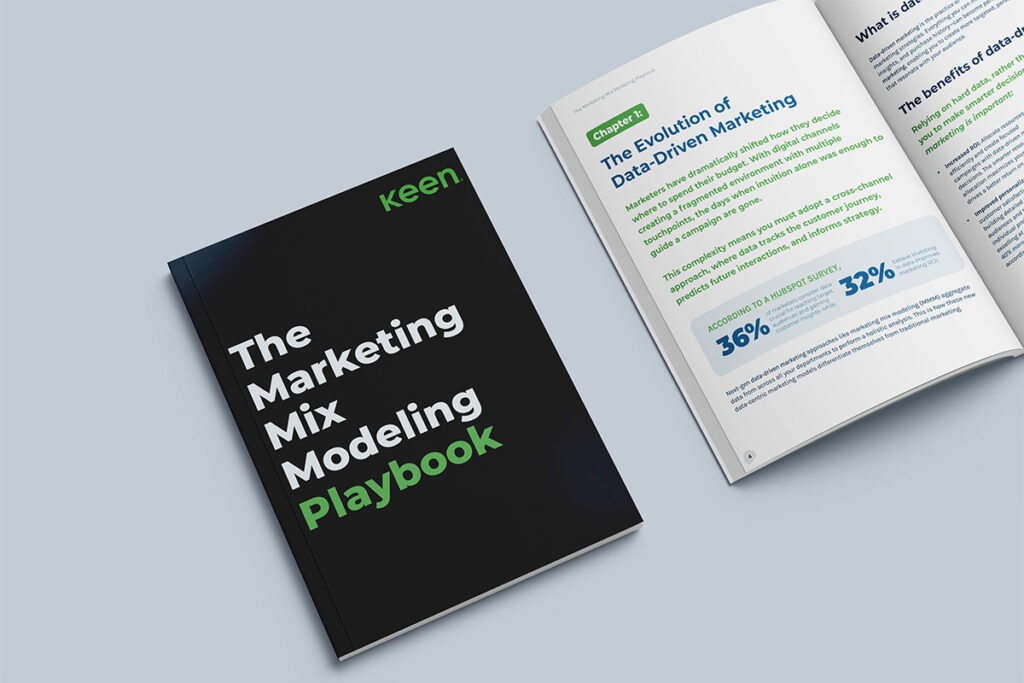Personalized marketing is a powerful tool—when done right. Consumers expect relevant experiences, but when brands cross the line into hyper-personalization, it can feel invasive instead of helpful.
Marketers need to find the balance between personalization and privacy, ensuring efficiency, trust, and long-term brand loyalty.
Here are three reasons we believe marketers should value speed and efficiency over granularity in prioritizing data investments.
Key takeaways:
- Intrusive personalization erodes trust. Consumers want relevance, not surveillance.
- Hyper-granular data is costly and complex. More data doesn’t always mean better decisions.
- Traditional marketing still matters. A balanced approach ensures efficiency and reach.
Why you should avoid intrusive personalization in digital marketing
When taken too far, personalization can backfire—raising privacy concerns, diminishing trust, and creating unnecessary complexity. Here’s why marketers should focus on strategic, effective personalization rather than excessive data collection.
1. Consumers want relevance—at a safe distance
Consumers appreciate tailored experiences—but not when they feel watched.
- A recent survey found 41% of consumers feel uneasy when they receive a personalized text from a brand while passing a physical store.
- According to new research, 49% of Americans feel that targeted ads unfairly stereotype them. This data shows how excessive reliance on personal data could come across as creepy.
Consumers want personalization that enhances convenience—not one that crosses privacy boundaries.
Personalization should feel helpful, not invasive. Use first-party data responsibly and let customers control their preferences.
Learn more: Keeping up with consumer shopping behavioral changes
2. More data isn’t always better
Over-relying on person-level data can lead to inefficient strategies that ignore broader market trends.
- Digital channels provide granular data, but most consumer brands still rely on traditional media like TV, radio, and out-of-home advertising. You need to optimize your marketing channel mix to accommodate such consumer habits.
- Over-personalization can result in higher costs and greater error rates, reducing marketing efficiency.
Balance micro and macro data: use personalization where it matters, but don’t neglect broad-reach strategies.
Keep learning: How to use granularity to your advantage
3. Hyper-personalization increases cost, complexity, and risk
While personalization in digital marketing enhances the customer experience, over-personalization leads to diminishing returns.
- More complex models = slower decision-making. When data models become too detailed, they are harder to maintain and less adaptable.
- Privacy regulations continue to evolve. Data-heavy strategies could become obsolete in a cookieless marketing world.
Focus on actionable, accessible data: prioritize data sources that align with your marketing goals without overcomplicating strategy.
Refine your personalized marketing strategy with Keen
Want to create personalized campaigns without losing efficiency? Keen helps marketers optimize data-driven personalization while maintaining agility, trust, and compliance.
- Analyze marketing spend across digital and traditional channels.
- Optimize personalization strategies without overcomplicating data.
- Ensure privacy-friendly, effective marketing campaigns.
Get a free trial to see how Keen can help you make your marketing personalization smarter.
Frequently asked questions
What is personalized marketing?
Personalized marketing is the process of using customer data like past purchases, online behavior, and preferences to create tailored marketing messages, product recommendations, and experiences that are specific to each individual.
Through personalized marketing, brands can create more relevant and meaningful interactions, which build stronger consumer connections and ultimately increase the odds of conversion.
Why should brands personalize experiences?
As mentioned above, it’s all about connection. Consumers respond more positively when they feel seen and heard. So from that perspective, personalization isn’t just about creating a unique experience for your customers; it’s about improving customer satisfaction and loyalty.
When done thoughtfully, personalization leads to increased engagement, higher conversion rates, and long-term customer relationships.
It makes customers feel seen and valued, which is key to fostering brand trust.
Personalization is also more efficient than generic marketing, as it helps brands meet specific needs and preferences, increasing overall relevance and effectiveness.
What are some personalized marketing examples?
Effective personalization can be seen in many successful marketing strategies.
- AI-powered product recommendations use algorithms to suggest items based on past behaviors or similar customer profiles, creating a more seamless shopping experience.
- Dynamic email campaigns tailor content based on customer activity (such as abandoned carts or past purchases), increasing the opportunity for engagement.
- Location-based promotions send customers relevant offers based on their proximity to a retail location, adding value and timely context to their experience without feeling invasive.
These tactics not only serve the customer’s needs but do so in a way that enhances their experience without overstepping boundaries.
What are some examples of bad personalization in marketing?
While personalization can be powerful, it can also backfire if used poorly.
- Overly intrusive retargeting ads that follow customers around after they’ve visited a website, for example, can make people feel like their privacy has been violated.
- Excessive use of personal data, especially when collected without clear consent, creates a sense of distrust, making consumers feel like they’re being watched.
- Irrelevant recommendations (like suggesting baby products to a customer who just bought a birthday gift for an adult) can frustrate customers, leaving them feeling misunderstood. Focus on creating a personalized experience that feels intuitive and supportive, not invasive.
Overly intrusive retargeting ads, excessive use of personal data without consent, and irrelevant recommendations that frustrate rather than assist consumers.
How can I balance personalized marketing with privacy concerns?
Balancing personalization with privacy is essential for data-driven marketing.
- One key approach is to use privacy-friendly first-party data, which comes directly from customer interactions and is often more trustworthy.
- Providing clear opt-in options where customers have control over what data they share and how it’s used builds trust.
- Transparency in how consumer information will be used and giving them the ability to easily update their preferences or opt-out makes them feel empowered and in control.
Remember, when customers feel their privacy is respected and their data is handled responsibly, they’re more likely to engage with your brand long-term.



